
The Hidden Gem of Trinidad: Sangre Grande
Discover Sangre Grande: A blend of rich culture, vibrant markets, and natural wonders in the heart of Trinidad's northeastern landscape.
Sangre Grande, meaning 'Big Blood' in Spanish, is a town brimming with rich history and natural beauty in Trinidad and Tobago. Nestled in the northeastern part of Trinidad, it offers a unique blend of cultural heritage and lush landscapes that captivate every visitor. The town gets its name from the red soil found in the area, which adds a unique charm to its scenery. Renowned for its vibrant local markets, Sangre Grande is the perfect place to immerse yourself in the daily life of Trinidadians. The markets are filled with fresh produce, handmade crafts, and local delicacies that provide a true taste of the island's culture. Don't miss the chance to try some local favorites like doubles, roti, and fresh tropical fruits. Nature enthusiasts will find themselves in paradise with the town's proximity to several natural attractions. The Matura National Park, just a short drive away, is a haven for bird watchers and nature lovers. Here, you can embark on guided tours to witness the nesting of leatherback turtles, an unforgettable experience. Additionally, the nearby rivers and waterfalls offer serene spots for picnicking and swimming, making it an ideal destination for those seeking both adventure and relaxation.
Local tips in Sangre Grande
- Visit the local markets early in the morning for the best produce and to experience the vibrant atmosphere.
- Take a guided tour to Matura National Park to see the leatherback turtles nesting, an activity best enjoyed from March to August.
- Explore the nearby rivers and waterfalls for a refreshing swim or a quiet picnic spot.
- Try local street food like doubles and roti for an authentic taste of Trinidadian cuisine.
- Bring comfortable walking shoes, as exploring the town and its natural attractions often involves a fair bit of walking.
The Hidden Gem of Trinidad: Sangre Grande
Sangre Grande, meaning 'Big Blood' in Spanish, is a town brimming with rich history and natural beauty in Trinidad and Tobago. Nestled in the northeastern part of Trinidad, it offers a unique blend of cultural heritage and lush landscapes that captivate every visitor. The town gets its name from the red soil found in the area, which adds a unique charm to its scenery. Renowned for its vibrant local markets, Sangre Grande is the perfect place to immerse yourself in the daily life of Trinidadians. The markets are filled with fresh produce, handmade crafts, and local delicacies that provide a true taste of the island's culture. Don't miss the chance to try some local favorites like doubles, roti, and fresh tropical fruits. Nature enthusiasts will find themselves in paradise with the town's proximity to several natural attractions. The Matura National Park, just a short drive away, is a haven for bird watchers and nature lovers. Here, you can embark on guided tours to witness the nesting of leatherback turtles, an unforgettable experience. Additionally, the nearby rivers and waterfalls offer serene spots for picnicking and swimming, making it an ideal destination for those seeking both adventure and relaxation.
When is the best time to go to Sangre Grande?
Iconic landmarks you can’t miss
Royal Castle
Experience the essence of Trinidadian fast food at Royal Castle in Sangre Grande, where delicious flavors meet a vibrant atmosphere.
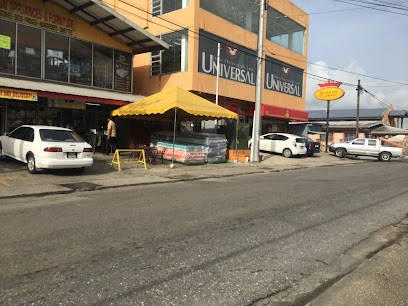
Mario's Pizza
Savor the authentic taste of Trinidad at Mario's Pizza, where every bite is a slice of happiness amidst the vibrant local culture.
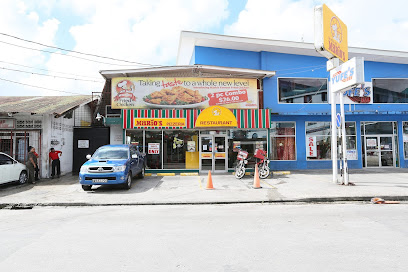
Homes
Experience the rich flavors of Trinidad and Tobago at Homes Restaurant in Sangre Grande, where every dish tells a story of local culture and tradition.
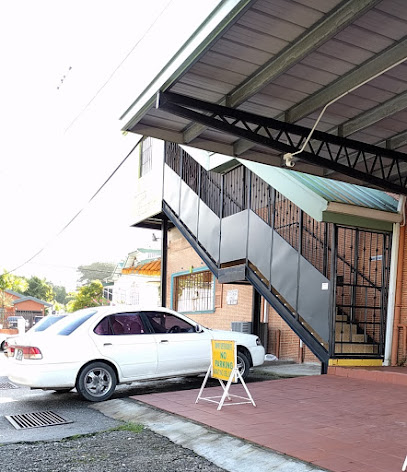
Rio Seco Waterfall
Experience the breathtaking beauty of Rio Seco Waterfall, a hidden oasis in Sangre Grande, Trinidad, perfect for hiking and nature lovers.

Chinese Garden
Experience serenity and cultural beauty at the Chinese Garden in Sangre Grande, an oasis of tranquility showcasing traditional Chinese landscaping.
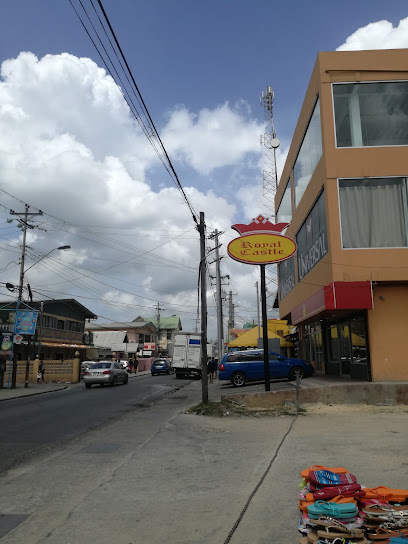
Blue Oasis Pool Facility
Experience the tranquility and fun at Blue Oasis Pool Facility in Sangre Grande, a perfect retreat for relaxation and recreation under the Caribbean sun.
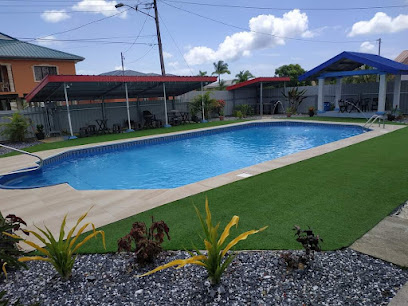
Aaron’s
Experience authentic Trinidadian cuisine at Aaron's in Sangre Grande, a culinary haven for food lovers seeking local delights.
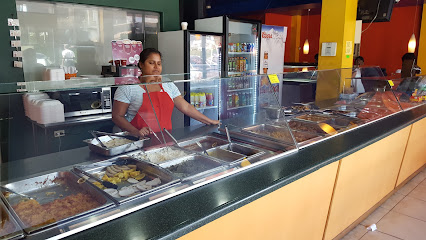
Grande Food Hub
Experience a delightful culinary journey at Grande Food Hub, Sangre Grande's vibrant food court with diverse local and international cuisines.

Tantra Terraces
Discover Tantra Terraces, Sangre Grande's premier event venue, perfect for weddings, parties, and corporate gatherings in Trinidad.
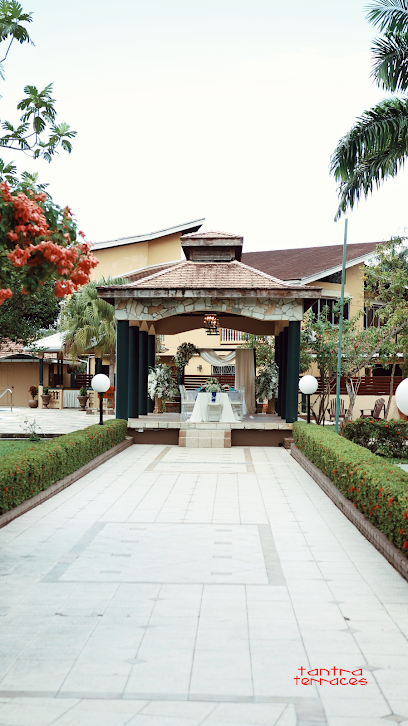
Café Grande
Experience the essence of Trinidad at Café Grande, a charming café in Sangre Grande serving local cuisine and inviting ambiance.
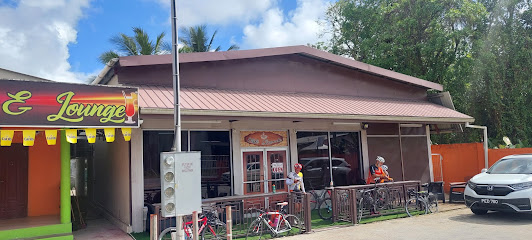
Asia Chopstick Restaurant & Bar
Experience the authentic taste of Asia in Sangre Grande with a diverse menu of delicious dishes at Asia Chopstick Restaurant & Bar.
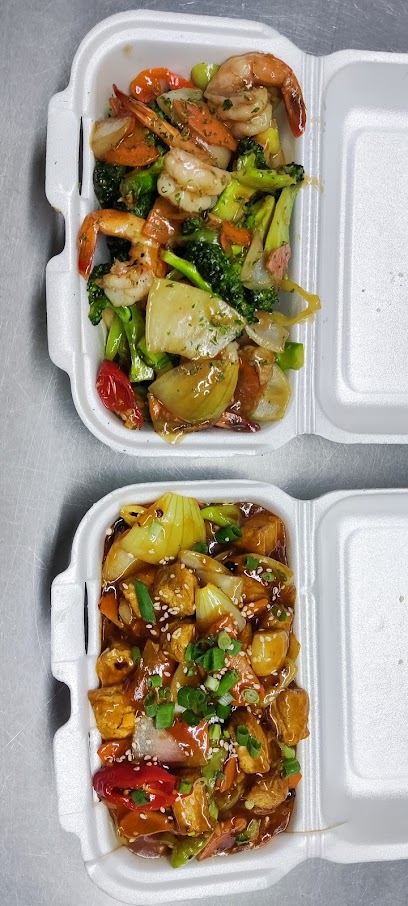
D Bar B Que Shed
Experience the authentic taste of Trinidad at D Bar B Que Shed, where every bite is a celebration of local barbecue culture.
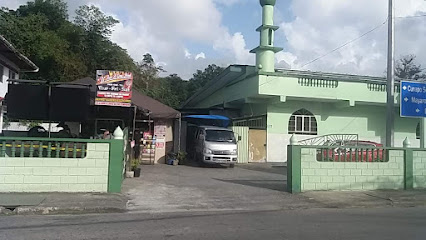
Darryl's Famous Foods Restaurants
Discover the essence of Trinidadian cuisine at Darryl's Famous Foods, a culinary hotspot in Sangre Grande offering authentic flavors and vibrant atmosphere.

Centura Restaurant &Bar
Experience the flavors of Trinidad at Centura Restaurant & Bar in Sangre Grande, a vibrant spot for delicious cuisine and local culture.
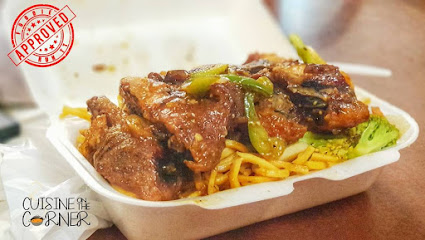
Creamy Roll
Experience a world of sweetness at Creamy Roll, Sangre Grande's favorite dessert shop offering delightful treats for every palate.
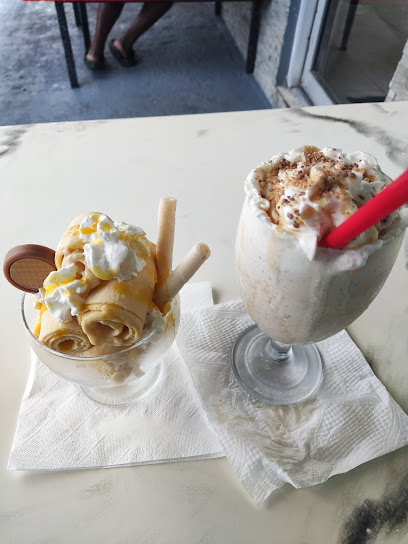
Unmissable attractions to see
Queen's Park Savannah
Experience the vibrant culture and natural beauty of Trinidad at Queen's Park Savannah, the heart of Port of Spain.
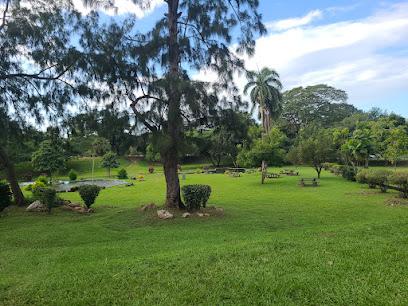
Maracas Beach
Experience the stunning beauty of Maracas Beach in Trinidad, a perfect destination for relaxation, adventure, and local culinary delights.
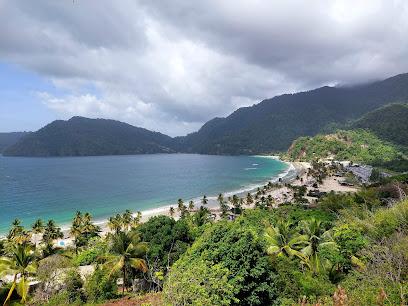
Royal Botanic Gardens
Explore the lush landscapes and diverse flora of the Royal Botanic Gardens in Port of Spain, a tranquil retreat perfect for nature lovers and tourists.
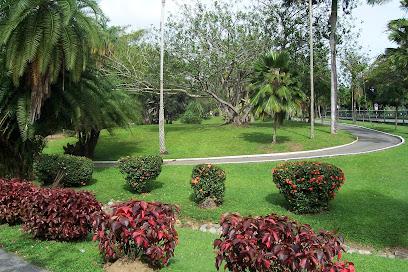
San Fernando Hill
Discover the breathtaking views and rich heritage of San Fernando Hill, a must-visit national park in Trinidad.
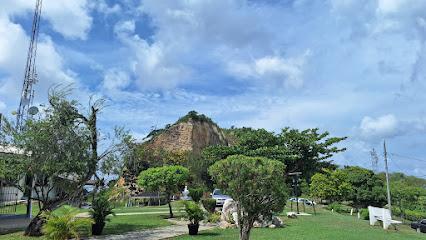
Las Cuevas Beach
Experience the tranquil beauty of Las Cuevas Beach, Trinidad - a paradise of golden sands, azure waters, and breathtaking sunsets.
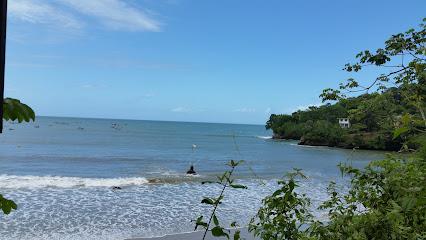
Caroni Bird Sanctuary
Discover the breathtaking Caroni Bird Sanctuary, a vibrant national park in Trinidad, home to exotic birds and rich biodiversity.
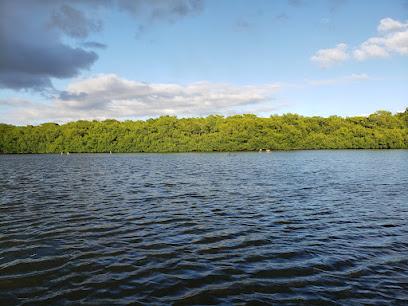
Lady Young Road Lookout
Experience the stunning panoramic views of Port of Spain at Lady Young Road Lookout, a scenic spot perfect for relaxation and photography.
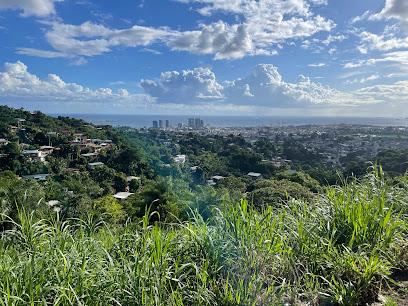
Brooklyn Bar
Experience the lively charm of Brooklyn Bar in Port of Spain, where locals and tourists come together for great drinks and unforgettable nights.
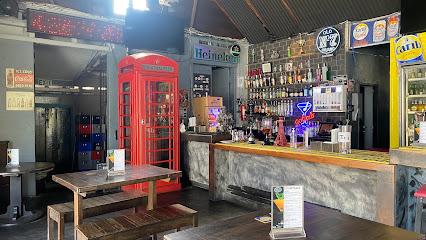
Lopinot Historical Complex
Explore the rich cultural heritage and stunning architecture of Lopinot Historical Complex, a must-see historical site in Trinidad.
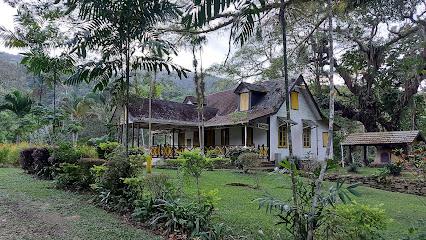
Fort George
Explore the rich history and breathtaking views at Fort George, a premier historical site in Port of Spain, Trinidad.
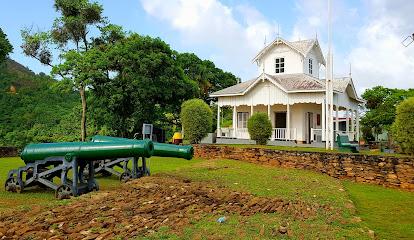
Blanchisseuse Spring Bridge
Experience the tranquil beauty of Blanchisseuse Spring Bridge, Trinidad's hidden gem surrounded by lush landscapes and rich local culture.
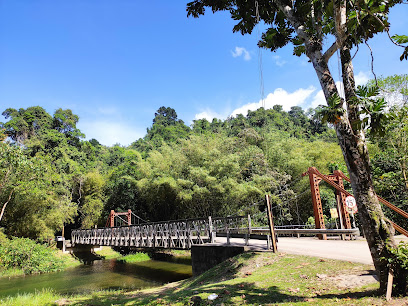
National Museum & Art Gallery
Discover the rich cultural heritage and artistic treasures of Trinidad and Tobago at the National Museum & Art Gallery in Port of Spain.
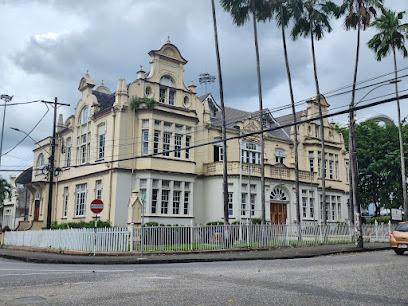
Pointe-a-Pierre Wildfowl Trust
Discover the natural beauty and wildlife conservation efforts at Pointe-a-Pierre Wildfowl Trust in Trinidad and Tobago.

Memorial Park
Discover the tranquility and cultural heritage of Trinidad at Memorial Park in Port of Spain, a perfect spot for relaxation and exploration.
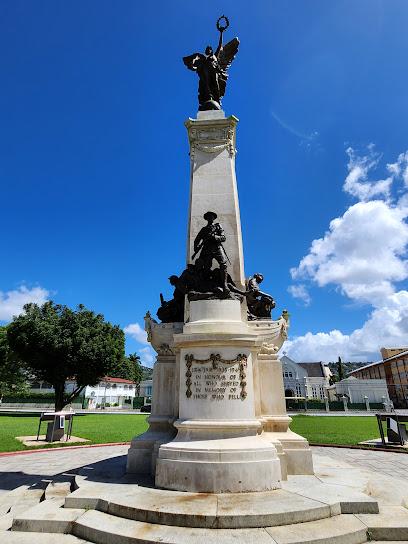
Rio Seco Waterfall
Experience the natural beauty of Rio Seco Waterfall in Sangre Grande, Trinidad—an adventure for hikers and a tranquil retreat for nature lovers.

Essential places to dine
Homes
Savor authentic Trinidadian flavors at Homes in Sangre Grande—your gateway to delightful Caribbean cuisine.
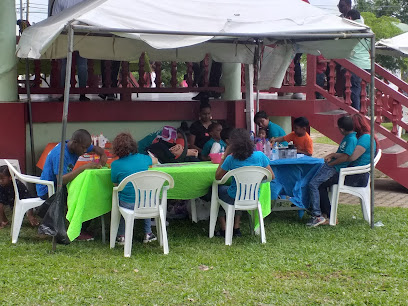
Chinese Garden
Explore tranquility at the Chinese Garden in Sangre Grande - A serene escape filled with lush landscapes and authentic cuisine.
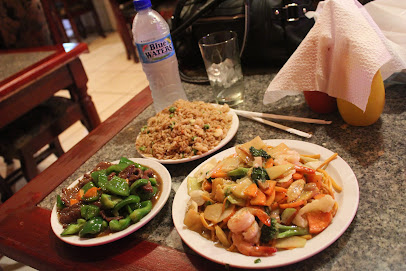
Jing Xing
Experience authentic Asian flavors at Jing Xing in Sangre Grande – a culinary gem where every dish tells a story.
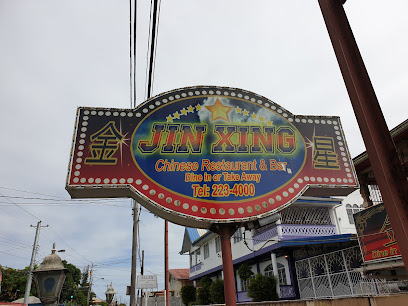
Aaron’s
Discover authentic Caribbean cuisine at Aaron's in Sangre Grande—where every dish tells a story of Trinidadian culture.
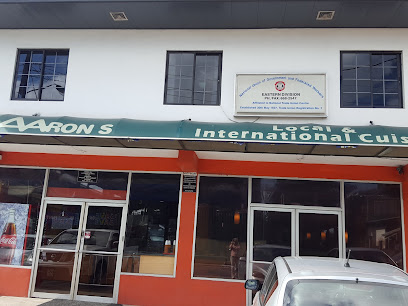
Grande Food Hub
Discover the vibrant flavors at Grande Food Hub - where local meets global cuisine in Sangre Grande's bustling food scene.
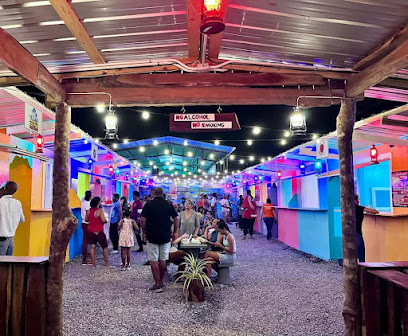
Friday Chinese Restaurant
Experience the fusion of traditional and fast food at Friday Chinese Restaurant in Sangre Grande - where authentic flavors meet convenience.
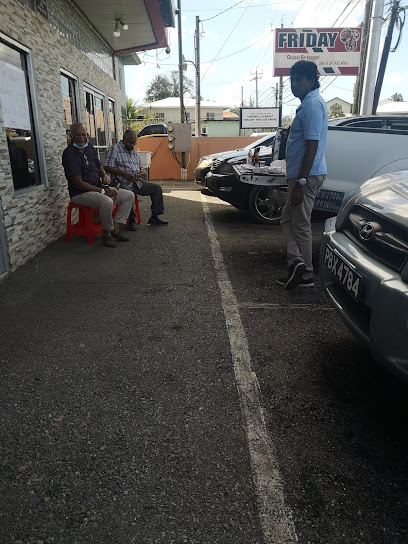
Asia Chopstick Restaurant & Bar
Discover the vibrant flavors of Asia at Asia Chopstick Restaurant & Bar in Sangre Grande – where every bite tells a story.
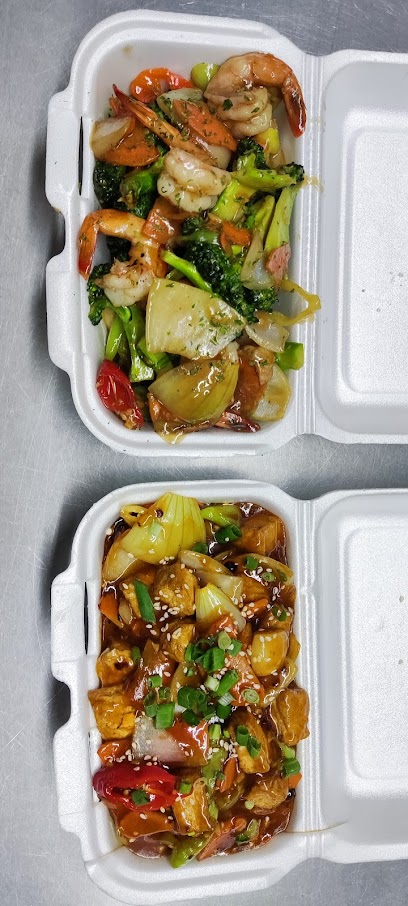
Darryl's Famous Foods Restaurants
Discover authentic Trinidadian flavors at Darryl's Famous Foods in Sangre Grande—an unmissable dining experience amidst vibrant Caribbean culture.

Centura Restaurant &Bar
Experience authentic Trinidadian cuisine at Centura Restaurant & Bar in Sangre Grande - where flavor meets hospitality.
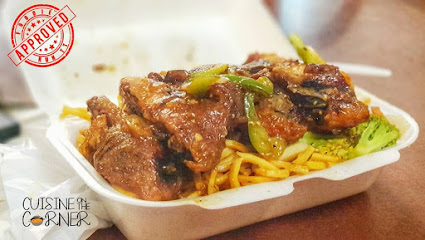
Ma Shines Restaurant & Bar
Savor authentic Creole cuisine at Ma Shines Restaurant & Bar in Sangre Grande - where every meal is a celebration of Trinidadian culture.

The S&S Roti Shop
Discover authentic Trinidadian cuisine at The S&S Roti Shop in Sangre Grande - where every bite is a taste of local tradition.
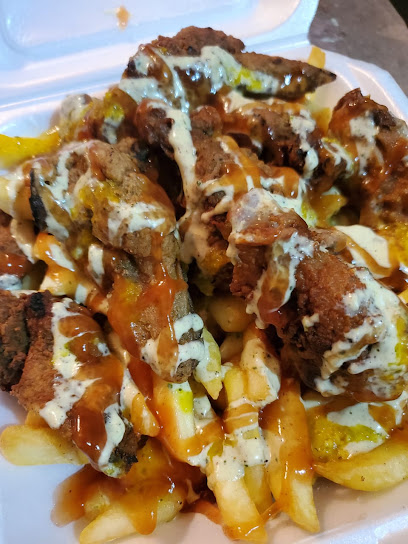
Traffic Rest. & Bar
Discover authentic Trinidadian flavors at Traffic Rest. & Bar - where local cuisine meets vibrant nightlife in Sangre Grande.

Yu Yuan Restaurant & Bar
Discover the vibrant flavors of Trinidad at Yu Yuan Restaurant & Bar in Sangre Grande - where local meets international cuisine.

Hang fai chinese restaurant
Experience the essence of Chinese cuisine at Hang Fai Restaurant in Sangre Grande, where tradition meets flavor in every dish.

Roti hut
Experience authentic Trinidadian cuisine at Roti Hut – the perfect spot for delicious rotis in Sangre Grande.

Markets, malls and hidden boutiques
Sangre Grande Coss Cutters
Explore local goods and fresh produce at Sangre Grande Coss Cutters, a vibrant supermarket showcasing the essence of Trinidadian shopping.
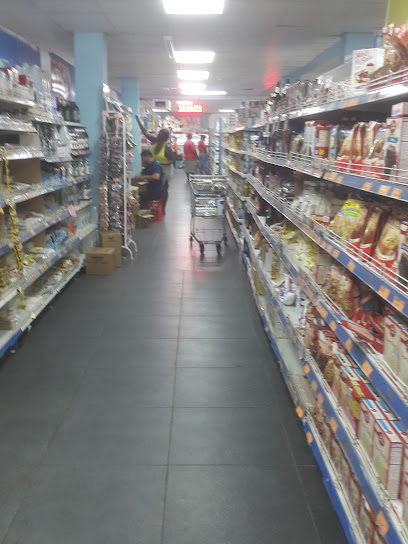
Motee & Son Garden Shop
Discover lush greenery and expert gardening supplies at Motee & Son Garden Shop in Sangre Grande, a paradise for plant lovers and gardening enthusiasts.
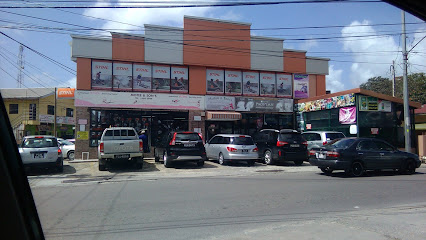
T Mall Supermarket
Discover a world of flavors and local culture at T Mall Supermarket in Sangre Grande, Trinidad.
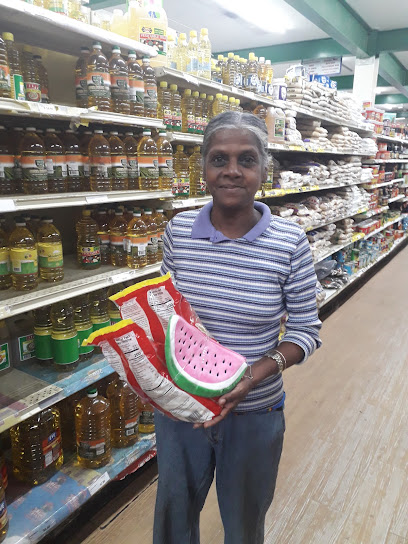
Hang Fai Supermarket
Explore local flavors at Hang Fai Supermarket, a culinary hub in Sangre Grande, offering fresh produce and diverse international products.

SAI Appliances & Furniture
Discover quality home furnishings and stylish appliances at SAI Appliances & Furniture in Sangre Grande, Trinidad for a perfect home makeover.
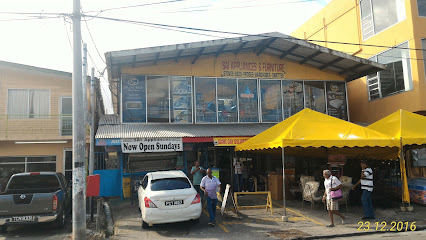
D&A Hardware
Discover D&A Hardware in Sangre Grande: Quality tools, great prices, and expert service for all your DIY needs.
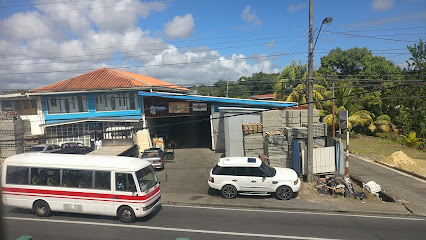
Prisan Enterprises Ltd.
Discover quality hardware supplies at Prisan Enterprises Ltd. in Sangre Grande, Trinidad - your go-to destination for home improvement needs.

P.Dass and sons Hardware
Explore P.Dass and Sons Hardware in Sangre Grande for quality tools and a glimpse into Trinidadian community spirit.

Naipaul's Holding Ltd
Discover the literary treasures and stationery delights at Naipaul's Holding Ltd in Sangre Grande, Trinidad—a true haven for book lovers.
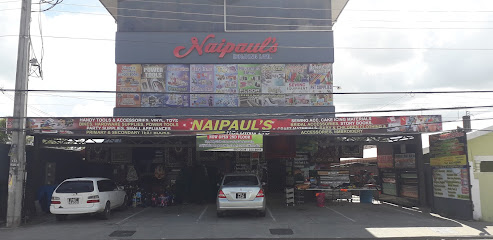
Chuan Wez Chinese Supermarket
Discover authentic Chinese ingredients at Chuan Wez Chinese Supermarket, a culinary treasure trove in Sangre Grande, perfect for food lovers and home cooks.

Wedge Hardware
Discover a vast selection of tools and supplies at Wedge Hardware in Sangre Grande, perfect for all your home improvement projects.

Just Dessertz & Treatz
Discover the heavenly flavors of Trinidad at Just Dessertz & Treatz, the ultimate stop for pastry lovers seeking sweet indulgence.
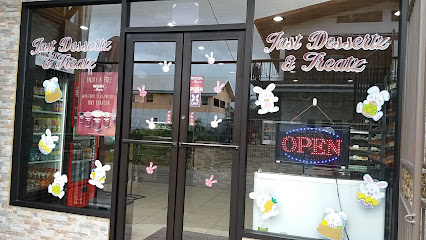
Lee's Little Shop
Experience the essence of Trinidad at Lee's Little Shop, your go-to variety store for local treasures and unique souvenirs.
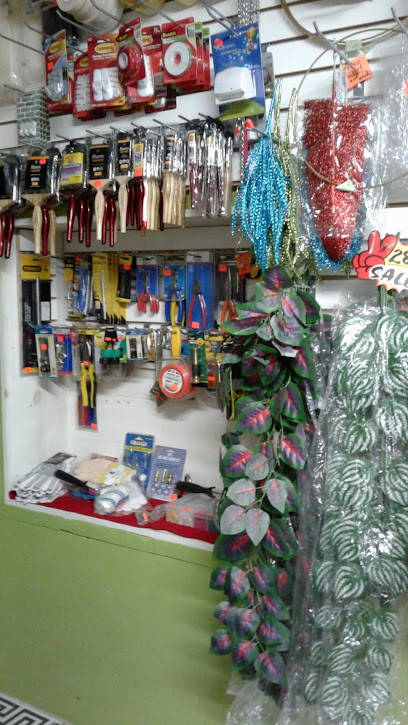
Aleana's Floral and Gift Shop
Explore Aleana's Floral and Gift Shop in Sangre Grande for exquisite flowers and unique gifts that embody the beauty of Trinidad.
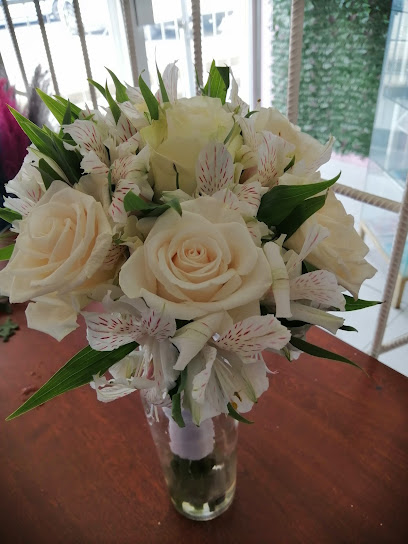
KP Hardware & Supplies
Explore KP Hardware & Supplies in Sangre Grande for all your DIY and home improvement needs with quality tools and materials.
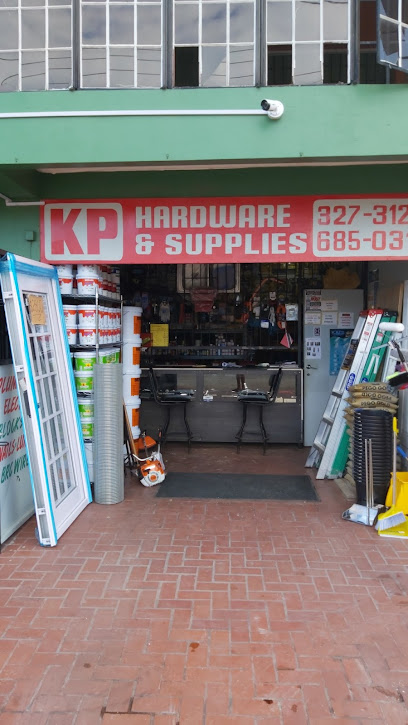
Essential bars & hidden hideouts
Purple Moon
Dive into the vibrant nightlife of Sangre Grande at Purple Moon, where friendly vibes and refreshing drinks await every visitor.
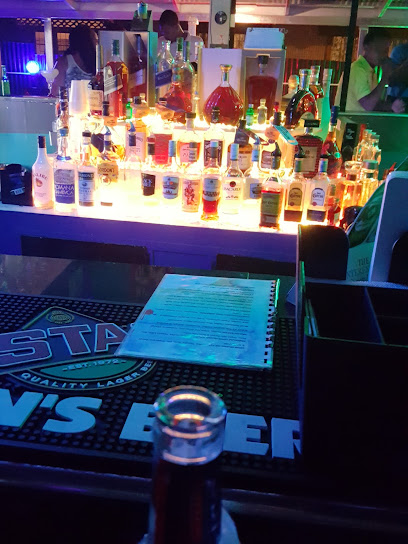
Miguelitos
Discover the vibrant nightlife at Miguelitos in Sangre Grande, where great drinks and lively entertainment come together for an unforgettable experience.
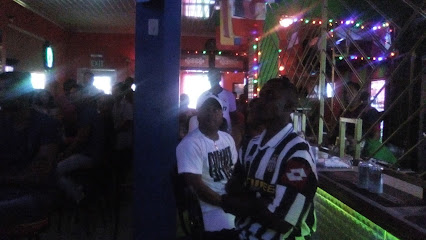
Pops Bar
Experience the vibrant nightlife and local flavors at Pops Bar in Sangre Grande, where friendly faces and refreshing drinks await.
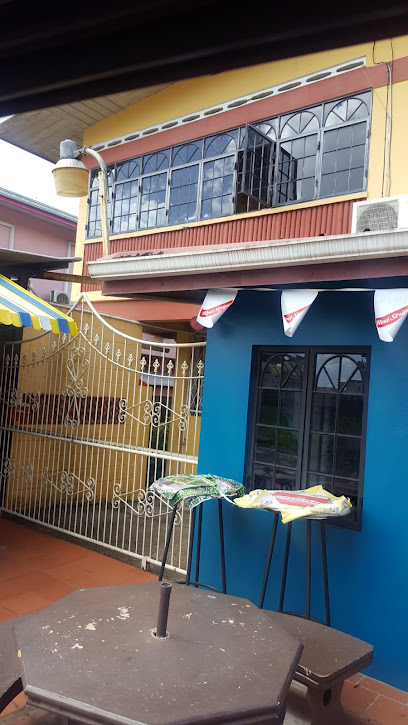
Traffic Rest. & Bar
Discover the vibrant flavors and lively atmosphere of Traffic Rest. & Bar, the perfect dining spot in Sangre Grande, Trinidad.
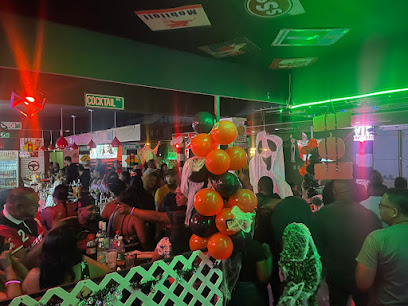
D' Rum Therapy Sports Bar
Discover the vibrant atmosphere of D' Rum Therapy Sports Bar in Sangre Grande, offering delicious food, refreshing drinks, and a taste of local culture.
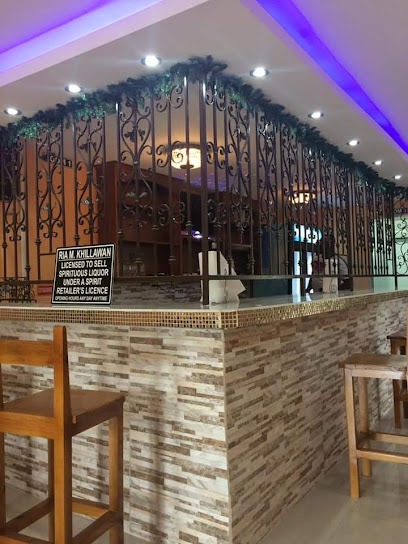
Chill Spot Sports Bar
Experience the ultimate sports bar atmosphere at Chill Spot Sports Bar in Sangre Grande, where great food meets thrilling live sports.
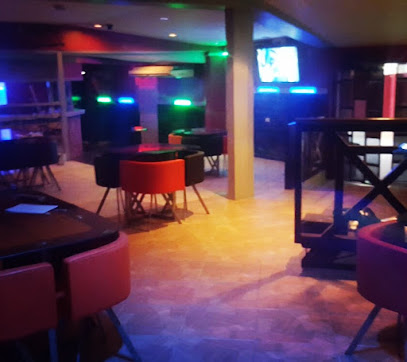
Travellers Bar
Discover the lively spirit of Sangre Grande at Travellers Bar, a local hotspot for drinks and good vibes.

The G Spot Bar & Lounge
Experience the vibrant atmosphere and delicious grilled dishes at The G Spot Bar & Lounge in Sangre Grande, Trinidad.

The Bourbon Room
Discover the vibrant nightlife of Sangre Grande at The Bourbon Room, where local culture meets exquisite drinks and entertainment.
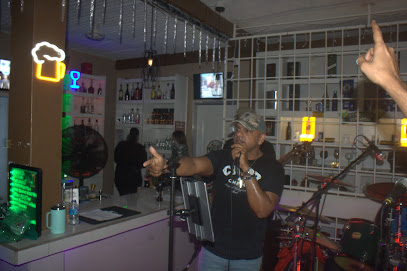
Rumbar
Experience the vibrant nightlife at Rumbar in Sangre Grande, a local favorite for drinks, dancing, and unforgettable Caribbean vibes.

Blue's Bar
Discover the vibrant nightlife of Sangre Grande at Blue's Bar, where local culture and entertainment come alive in a lively atmosphere.

Angels Asylum Sports Bar
Discover Angels Asylum Sports Bar - the ultimate destination for sports enthusiasts in Sangre Grande, Trinidad. Enjoy great food, drinks, and a vibrant atmosphere.

Early bird bar
Experience the vibrant nightlife of Sangre Grande at Early Bird Bar, where local culture meets refreshing drinks in a lively atmosphere.

Cornerstone Bar
Experience the vibrant nightlife and local flavors at Cornerstone Bar in Sangre Grande, Trinidad, a must-visit destination for every traveler.

Good Times Bar
Experience the vibrant nightlife and Caribbean charm at Good Times Bar in Sangre Grande, where every visit is a celebration of culture and community.

Local Phrases
-
- HelloHello
[Hello] - GoodbyeLeh we go
[Leh we go] - YesYes
[Yes] - NoNo
[No] - Please/You're welcomeYuh welcome
[Yuh welcome] - Thank youTank yuh
[Tank yuh] - Excuse me/SorrySarry
[Sarry] - How are you?How yuh doin?
[How yuh doin?] - Fine. And you?Ah good. An yuh?
[Ah good. An yuh?] - Do you speak English?Yuh speak English?
[Yuh speak English?] - I don't understandAh doh understand
[Ah doh understand]
- HelloHello
-
- I'd like to see the menu, pleaseLemme see de menu, please
[Lemme see de menu, please] - I don't eat meatAh doh eat meat
[Ah doh eat meat] - Cheers!Cheers!
[Cheers!] - I would like to pay, pleaseAh go pay now, please
[Ah go pay now, please]
- I'd like to see the menu, pleaseLemme see de menu, please
-
- Help!Help!
[Help!] - Go away!Go way!
[Go way!] - Call the Police!Call de Police!
[Call de Police!] - Call a doctor!Call ah doctor!
[Call ah doctor!] - I'm lostAh loss
[Ah loss] - I'm illAh sick
[Ah sick]
- Help!Help!
-
- I'd like to buy...Ah want tuh buy...
[Ah want tuh buy...] - I'm just lookingAh jus lookin
[Ah jus lookin] - How much is it?How much dis is?
[How much dis is?] - That's too expensiveDat too much
[Dat too much] - Can you lower the price?Yuh could drop de price?
[Yuh could drop de price?]
- I'd like to buy...Ah want tuh buy...
-
- What time is it?What time is it?
[What time is it?] - It's one o'clockIt one o'clock
[It one o'clock] - Half past (10)Half ten
[Half ten] - MorningMornin
[Mornin] - AfternoonAfternoon
[Afternoon] - EveningEvenin
[Evenin] - YesterdayYesterday
[Yesterday] - TodayToday
[Today] - TomorrowTomorrow
[Tomorrow] - 1One
[One] - 2Two
[Two] - 3Tree
[Tree] - 4Four
[Four] - 5Five
[Five] - 6Six
[Six] - 7Seven
[Seven] - 8Eight
[Eight] - 9Nine
[Nine] - 10Ten
[Ten]
- What time is it?What time is it?
-
- Where's a/the...?Where de...?
[Where de...?] - What's the address?What de address?
[What de address?] - Can you show me (on the map)?Yuh could show me (on de map)?
[Yuh could show me (on de map)?] - When's the next (bus)?When de next (bus)?
[When de next (bus)?] - A ticket (to ....)Ah ticket (to ....)
[Ah ticket (to ....)]
- Where's a/the...?Where de...?
History of Sangre Grande
-
The name 'Sangre Grande' translates to 'Big Blood' in Spanish, a reference to the reddish hue of the soil in the area. The town's history dates back to the early colonial period when Spanish explorers and settlers first arrived in Trinidad. Sangre Grande was initially a small settlement but grew steadily due to its strategic location and fertile lands.
-
Before the arrival of Europeans, the area now known as Sangre Grande was inhabited by the indigenous Arawak and Carib peoples. These tribes were skilled in agriculture, fishing, and hunting, and they left behind a rich legacy of artifacts and cultural practices that continue to influence the region.
-
During the Spanish colonial era, Sangre Grande was part of a network of missions and settlements aimed at spreading Christianity and controlling the local population. The Spanish introduced new agricultural techniques and crops, which played a significant role in the area's development.
-
In 1797, Trinidad was ceded to the British, leading to significant changes in the region. Sangre Grande began to develop rapidly as a center for agriculture, particularly cocoa and sugar cane plantations. The construction of the railroad in the late 19th century further boosted the town's economy by improving transportation and trade links.
-
Sangre Grande is a vibrant cultural melting pot, reflecting the diverse backgrounds of its inhabitants. The area is home to Afro-Trinidadians, Indo-Trinidadians, Europeans, Chinese, and Middle Eastern communities. This diversity is evident in the local cuisine, festivals, and traditions, making Sangre Grande a unique and dynamic place.
-
In recent decades, Sangre Grande has undergone significant modernization, with improvements in infrastructure, healthcare, and education. The town has become a hub for commerce and industry in the northeastern region of Trinidad, while still retaining its rich historical and cultural heritage.
-
Sangre Grande is known for its lush natural landscapes, including the Matura National Park and the Nariva Swamp. These areas are popular with eco-tourists and nature enthusiasts who come to explore the rich biodiversity and scenic beauty of the region. Efforts to preserve these natural habitats are ongoing, making Sangre Grande a key area for environmental conservation in Trinidad and Tobago.
Sangre Grande Essentials
-
Sangre Grande is located in the northeastern part of Trinidad, in Trinidad and Tobago. The nearest major airport is Piarco International Airport, approximately 45 kilometers away. From the airport, you can take a taxi or hire a car to reach Sangre Grande, which typically takes about an hour. Public transportation options include taking a bus or maxitaxi (shared minibus) from Port of Spain, which is the capital city, to Sangre Grande. The bus ride offers a scenic view of the countryside and usually takes around 1.5 to 2 hours.
-
Sangre Grande has a variety of transportation options for tourists. Taxis are readily available and are a convenient way to get around. Public buses and maxitaxis operate throughout the area, connecting Sangre Grande to nearby towns and villages. Renting a car is also an option, giving you the freedom to explore at your own pace. Bicycles and scooters can be rented for shorter trips and are a fun way to navigate the town. Be sure to negotiate taxi fares in advance to avoid misunderstandings.
-
The official currency of Trinidad and Tobago is the Trinidad and Tobago Dollar (TTD). Credit and debit cards are widely accepted in hotels, restaurants, and larger shops, but it's advisable to carry some cash, especially for smaller businesses and local markets. ATMs are available in Sangre Grande for cash withdrawals. Currency exchange services can be found in banks and some larger hotels.
-
Sangre Grande is generally considered safe for tourists, but it is important to take standard precautions. Avoid walking alone at night in unfamiliar areas and be cautious with your belongings in crowded places. Some areas in and around Sangre Grande have higher crime rates, particularly targeting tourists, so it is best to stay informed and avoid those neighborhoods. Always use registered taxis and avoid accepting rides from strangers.
-
In case of an emergency, dial 999 for police assistance or 990 for medical emergencies. Sangre Grande has a local police station and medical facilities, including a public hospital and several clinics. It is highly recommended to have travel insurance that covers medical emergencies. For minor health issues, there are pharmacies in the area where over-the-counter medications can be purchased.
-
Fashion: Do dress modestly, especially when visiting religious sites or rural areas. Avoid wearing revealing clothing. Religion: Do respect local customs and traditions. When visiting religious sites, dress conservatively and remove your shoes before entering. Public Transport: Do be respectful and courteous. Offer your seat to elderly passengers and avoid loud conversations. Greetings: Do greet people with a friendly 'Good morning' or 'Good afternoon.' Handshakes are common, but a nod or wave is also acceptable. Eating & Drinking: Do try local foods and accept food offerings graciously. Don’t refuse hospitality, as it may be considered impolite.
-
To experience Sangre Grande like a local, visit the vibrant weekend markets where you can buy fresh produce and local crafts. Engage with locals who are often friendly and willing to share stories about the area. Don’t miss the fresh fish and seafood, which are local specialties. Explore the nearby nature trails and waterfalls, and take part in community events and festivals to get a true feel of the local culture. For a unique experience, visit the Nariva Swamp and Bush Bush Wildlife Sanctuary.
Nearby Cities to Sangre Grande
-
Things To Do in Arima
-
Things To Do in Tunapuna
-
Things To Do in Chaguanas
-
Things To Do in Couva
-
Things To Do in Port of Spain
-
Things To Do in Princes Town
-
Things To Do in San Fernando
-
Things To Do in Point Fortin
-
Things To Do in Scarborough
-
Things To Do in Westerhall
-
Things To Do in Grenville
-
Things To Do in Guava
-
Things To Do in Gouyave
-
Things To Do in Victoria
-
Things To Do in Sauteurs







